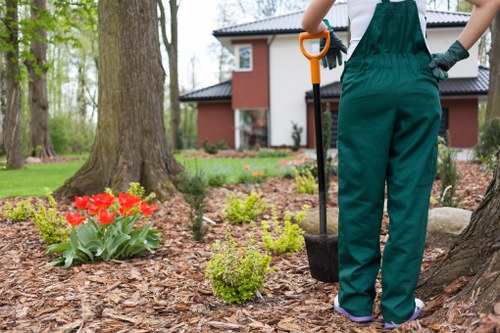Transforming Urban Spaces: Landscaping in Canary Wharf
Introduction to Landscaping in Canary Wharf

Canary Wharf, renowned as one of London's premier business districts, seamlessly blends urban sophistication with natural beauty. Landscaping plays a pivotal role in enhancing the aesthetic appeal and environmental sustainability of this bustling area.
The strategic implementation of green spaces not only provides a respite for professionals but also contributes to the overall well-being of the community.
In this article, we explore the significance, trends, and best practices of landscaping in Canary Wharf.
Importance of Landscaping in Urban Environments

Urban landscaping is essential in creating balanced ecosystems within cityscapes. In Canary Wharf, meticulous landscaping efforts help mitigate the effects of urbanization, such as air pollution and heat islands.
Green spaces offer numerous benefits, including improved air quality, reduced noise pollution, and enhanced mental health for residents and workers alike.
Moreover, well-designed landscapes can increase property values and attract businesses, making Canary Wharf a more desirable location.
Key Landscaping Features in Canary Wharf

Vertical Gardens
Vertical gardens are a prominent feature in Canary Wharf, maximizing green coverage in limited spaces. These living walls not only add visual interest but also improve air quality by absorbing pollutants.
Public Parks and Gardens
The district boasts several meticulously maintained parks and gardens, providing green oases amidst skyscrapers. These areas are perfect for relaxation, social gatherings, and outdoor activities.
Water Features
Water features, such as fountains and ponds, enhance the tranquility of the urban environment. They also play a role in cooling the surrounding area and supporting local wildlife.
Sustainable Landscaping Practices

Sustainability is at the forefront of landscaping initiatives in Canary Wharf. Practices such as using native plants, implementing rainwater harvesting systems, and reducing chemical usage contribute to environmental preservation.
Additionally, sustainable landscaping promotes biodiversity, creating habitats for various species and enhancing the resilience of urban ecosystems.
Green roofs and permeable pavements are also employed to manage stormwater runoff and reduce the district's carbon footprint.
Trends in Landscaping Design

Modern Minimalism
Modern minimalist designs emphasize clean lines, simplicity, and functionality. This trend aligns with the sleek architecture of Canary Wharf, creating harmonious and uncluttered spaces.
Biophilic Design
Biophilic design integrates natural elements into urban environments, fostering a connection between people and nature. Features like natural lighting, water elements, and abundant greenery are integral to this approach.
Smart Landscaping
Smart landscaping leverages technology to optimize plant care and maintenance. Automated irrigation systems, sensor-based lighting, and data-driven plant health monitoring are examples of innovations in this area.
Challenges and Solutions
Space Constraints
One of the primary challenges in Canary Wharf is the limited space available for expansive green areas. Creative solutions, such as rooftop gardens and compact green spaces, help overcome these constraints.
Maintenance Costs
Maintaining landscaped areas can be costly. Implementing sustainable practices and selecting low-maintenance plant species can significantly reduce ongoing expenses.
Environmental Impact
Balancing development with environmental preservation requires careful planning. Incorporating eco-friendly materials and practices ensures that landscaping efforts support both urban growth and ecological health.
Contact us today to learn how our landscaping services can transform your space in Canary Wharf.
